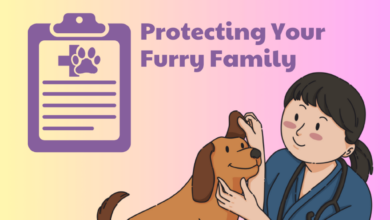Coverage for Pre-Existing Conditions in Pet Health Insurance
Your furry companions, the ones that bring endless joy and love into your lives, deserve the best care possible. However, unforeseen medical emergencies can put a strain on your finances and disrupt the well-being of your beloved pets. That’s where pet health insurance steps in, offering peace of mind and financial protection. While some policies may have restrictions or exclusions for pre-existing conditions, there are now insurance providers that offer coverage even for these conditions, giving you the reassurance that your pets will receive the care they need, no matter what.
Contents
- 1 1. What Are Pre-Existing Conditions?
- 2 2. Why Do Pre-Existing Conditions Matter?
- 3 3. Can I Get Pet Health Insurance If My Pet Has a Pre-Existing Condition?
- 4 4. How to Find Pet Health Insurance That Covers Pre-Existing Conditions
- 5 5. Waiting Periods for Pre-Existing Conditions
- 6 6. Exclusions for Pre-Existing Conditions
- 7 7. Limitations for Pre-Existing Conditions
- 8 8. Additional Considerations for Pre-Existing Conditions
- 9 9. Alternative Options for Pre-Existing Conditions
- 10 10. Conclusion
- 11 Section 2: Detailed Explanation of Pre-Existing Conditions Coverage
- 12 Covered Pre-Existing Conditions
- 13 Thank You for Reading!
1. What Are Pre-Existing Conditions?
Pre-existing conditions are medical conditions that an animal has before enrolling in a pet health insurance plan. These conditions may have been diagnosed, treated, or simply suspected. Common examples include allergies, arthritis, diabetes, and cancer.
2. Why Do Pre-Existing Conditions Matter?
Pre-existing conditions can significantly impact pet health insurance coverage. Many plans exclude coverage for pre-existing conditions, while others may limit coverage or impose waiting periods.
3. Can I Get Pet Health Insurance If My Pet Has a Pre-Existing Condition?
Yes, it is possible to obtain pet health insurance if your pet has a pre-existing condition. However, coverage options and costs may vary depending on the condition and the insurance provider.
4. How to Find Pet Health Insurance That Covers Pre-Existing Conditions
There are a few ways to find pet health insurance that covers pre-existing conditions:
- Research different insurance providers: Compare plans and policies from multiple insurers to find those that offer coverage for pre-existing conditions.
- Contact pet insurance brokers: Brokers can help you navigate the pet health insurance market and find plans that meet your specific needs.
- Join a pet insurance group: Some organizations offer group pet insurance plans that may include coverage for pre-existing conditions.
5. Waiting Periods for Pre-Existing Conditions
Some pet health insurance plans impose waiting periods for pre-existing conditions. This means that you may not be able to claim coverage for treatment related to a pre-existing condition until after a certain period of time has passed.
6. Exclusions for Pre-Existing Conditions
Some pet health insurance plans may exclude coverage for certain pre-existing conditions. These exclusions can vary widely depending on the insurer and the specific condition.
7. Limitations for Pre-Existing Conditions
Some pet health insurance plans may limit coverage for pre-existing conditions. This could include limits on the amount of coverage or the number of claims you can make.
8. Additional Considerations for Pre-Existing Conditions
When considering pet health insurance for a pet with a pre-existing condition, it is important to:
- Disclose the condition to the insurance provider accurately and completely.
- Review the policy carefully to understand the coverage and limitations for pre-existing conditions.
- Consider the potential costs of ongoing treatment and medications for the condition.
9. Alternative Options for Pre-Existing Conditions
If you cannot obtain pet health insurance that covers your pet’s pre-existing condition, there are other options available:
- Pet savings account: Set aside money in a savings account specifically for your pet’s veterinary expenses.
- Crowdfunding: Create an online fundraiser to raise funds for your pet’s treatment.
- Veterinary credit cards: Apply for a credit card specifically designed for veterinary expenses, which may offer financing options.
10. Conclusion
Understanding the coverage options for pre-existing conditions is crucial when choosing pet health insurance. By researching different insurers, considering the waiting periods and exclusions, and exploring alternative options, you can find the right coverage for your furry friend, regardless of their health history.
Section 2: Detailed Explanation of Pre-Existing Conditions Coverage
What Qualifies as a Pre-Existing Condition?
A pre-existing condition is generally defined as any health issue that a pet develops before enrolling in pet health insurance. This can include chronic conditions like diabetes or allergies, as well as accidents or illnesses that have been diagnosed or treated previously.
Why Pre-Existing Conditions Are Often Excluded
Insurance companies typically exclude pre-existing conditions from coverage because they are considered known risks. They assume that pet owners would be more likely to purchase insurance only after their pet has already developed a health issue.
How Some Insurance Plans Cover Pre-Existing Conditions
However, there are a growing number of pet health insurance plans that offer coverage for pre-existing conditions. These plans typically have waiting periods or limitations on coverage, but they can provide peace of mind for pet owners who are concerned about their pet’s health history.
Waiting Periods
Most pet health insurance plans that cover pre-existing conditions have a waiting period before coverage begins. This waiting period can range from 30 days to 12 months or more.
Coverage Limitations
Pre-existing condition coverage often comes with limitations. For example, the plan may only cover a certain percentage of treatment costs, or it may exclude certain types of treatments altogether.
Benefits of Pre-Existing Condition Coverage
Despite the limitations, having pre-existing condition coverage can provide significant benefits. It can help pet owners budget for unexpected veterinary expenses and gives them peace of mind knowing that their pet’s health is protected.
Comparing Plans with Pre-Existing Condition Coverage
When comparing pet health insurance plans with pre-existing condition coverage, it’s important to consider the waiting period, coverage limitations, and premiums. Choose the plan that provides the best balance of cost and coverage for your pet’s specific needs.
Additional Ways to Cover Pre-Existing Conditions
In addition to pet health insurance, there are other ways to cover the costs of treating pre-existing conditions. These include setting up a savings account for veterinary expenses, negotiating with your veterinarian on payment plans, or seeking financial assistance from animal charities.
Importance of Regular Veterinary Care
Regular veterinary care is essential for detecting and managing pre-existing conditions. By staying on top of your pet’s health, you can help prevent serious health issues and reduce the financial burden of treating them.
Conclusion
Pet health insurance with pre-existing condition coverage can provide peace of mind and financial protection for pet owners. By understanding the exclusions, limitations, and benefits of different plans, you can make an informed decision about the best option for your pet.
Covered Pre-Existing Conditions
1. Curable Conditions
Some insurers may cover pre-existing conditions if they have been successfully treated and are considered cured. For example, a policy may cover a pet that has had a minor skin infection that has since been resolved.
2. Chronic Conditions
Chronic conditions, such as diabetes or heart disease, may be covered by some policies. However, coverage may be limited to specific treatments or medications. It’s important to read the policy carefully to understand what is and is not covered.
3. Waiting Periods
Many pet health insurance policies have a waiting period for pre-existing conditions. This means that the insurance will not cover any treatment for the condition until after a certain period of time has passed. The waiting period can vary from policy to policy, so it’s important to compare policies carefully.
4. Exclusions
Some pet health insurance policies exclude pre-existing conditions altogether. This means that the insurance will not cover any treatment for any condition that the pet had before the policy went into effect.
5. Coverage Limits
Some pet health insurance policies have coverage limits for pre-existing conditions. This means that the insurance will only cover a certain amount of money for the treatment of the condition.
Thank You for Reading!
And there you have it, folks! Pet health insurance can indeed cover pre-existing conditions, offering a much-needed safety net for your furry friends. By providing peace of mind and protection against unexpected expenses, pet insurance can help you ensure your beloved companion receives the best possible care throughout their life. If you’re considering getting pet insurance, make sure to shop around and compare different policies to find the one that best fits your needs and budget. And hey, while you’re here, why not browse our website for more informative articles and helpful tips? We’ll be here, ready to help you navigate the world of pet ownership with ease. See you again soon!








